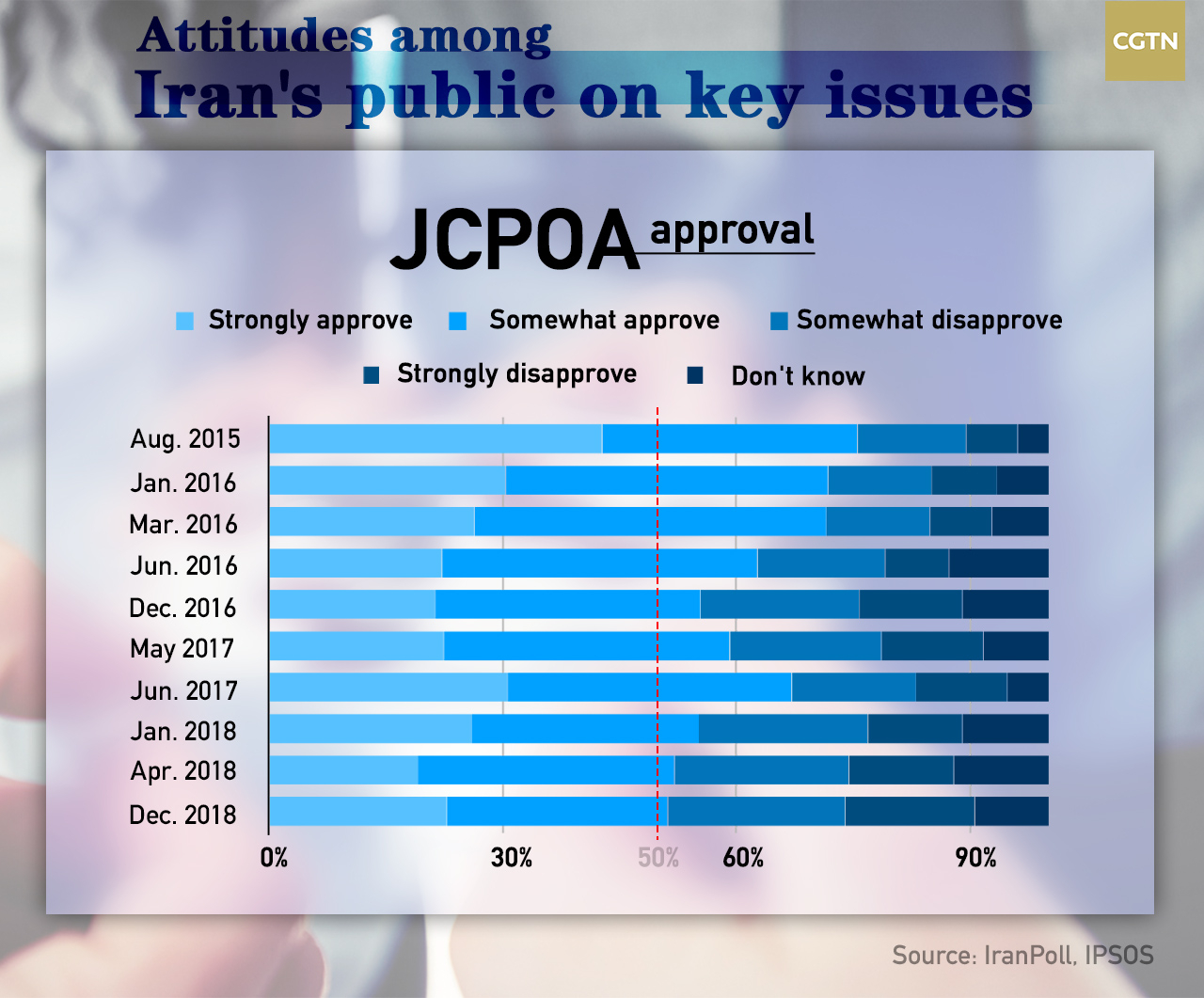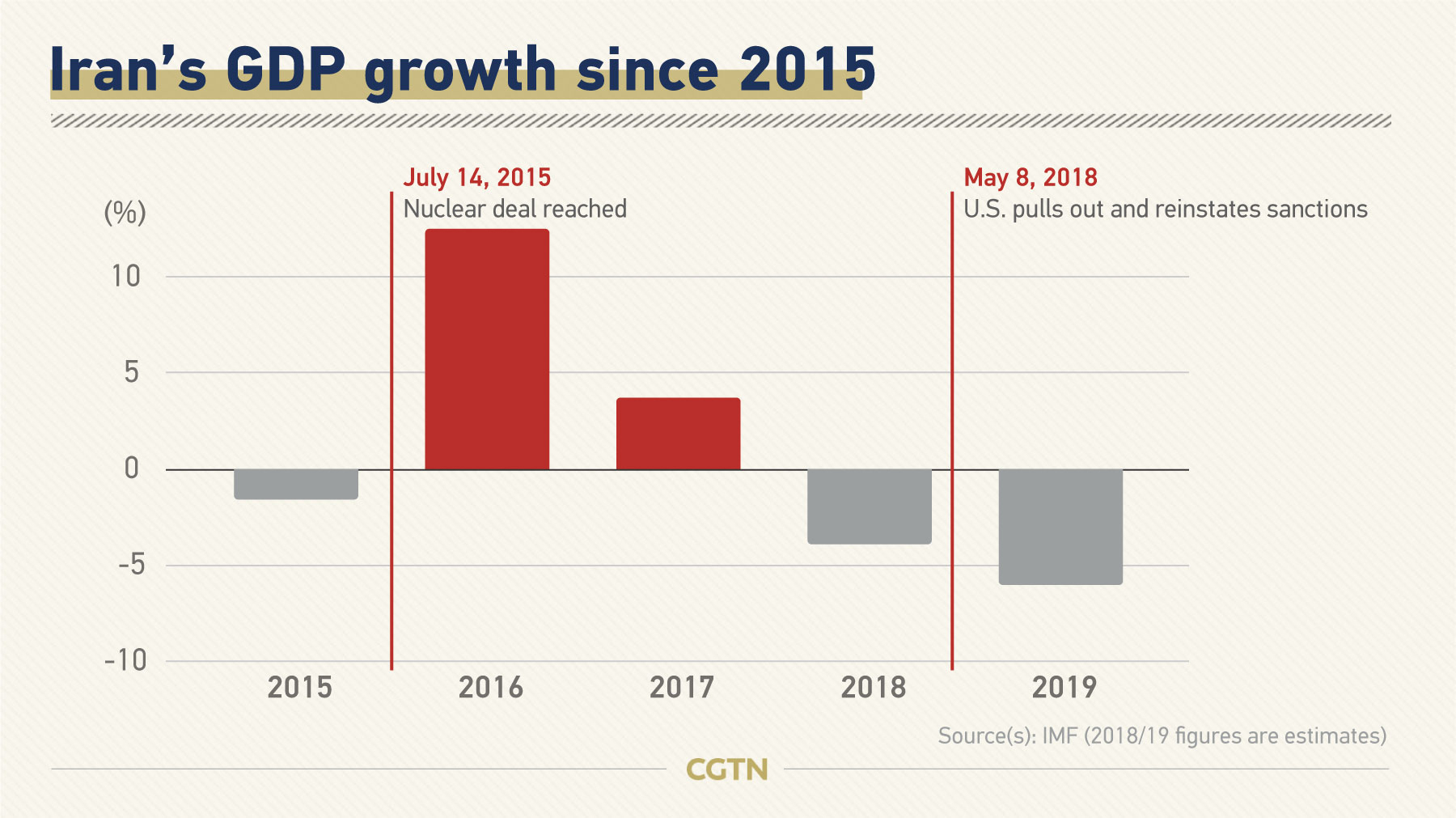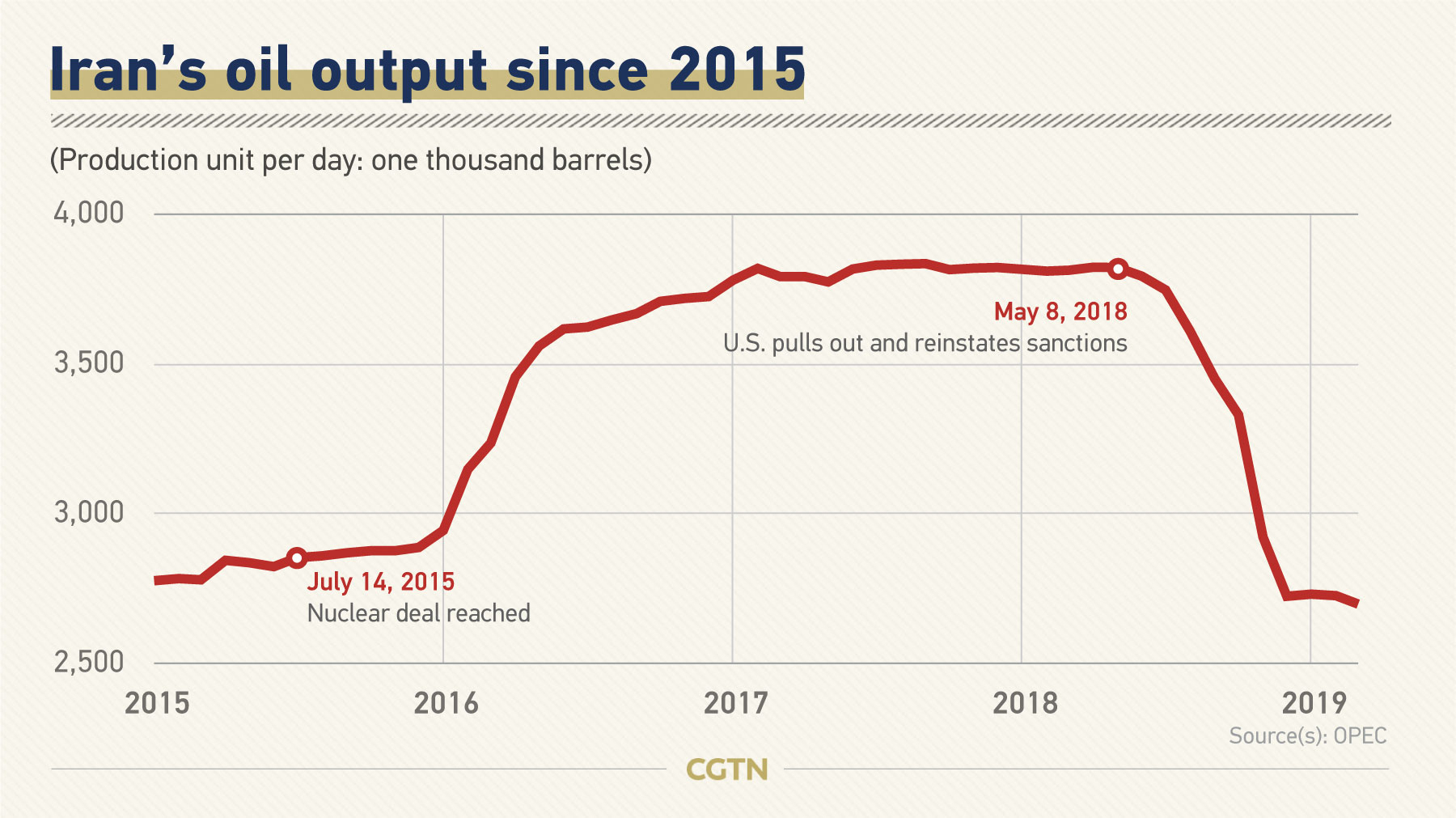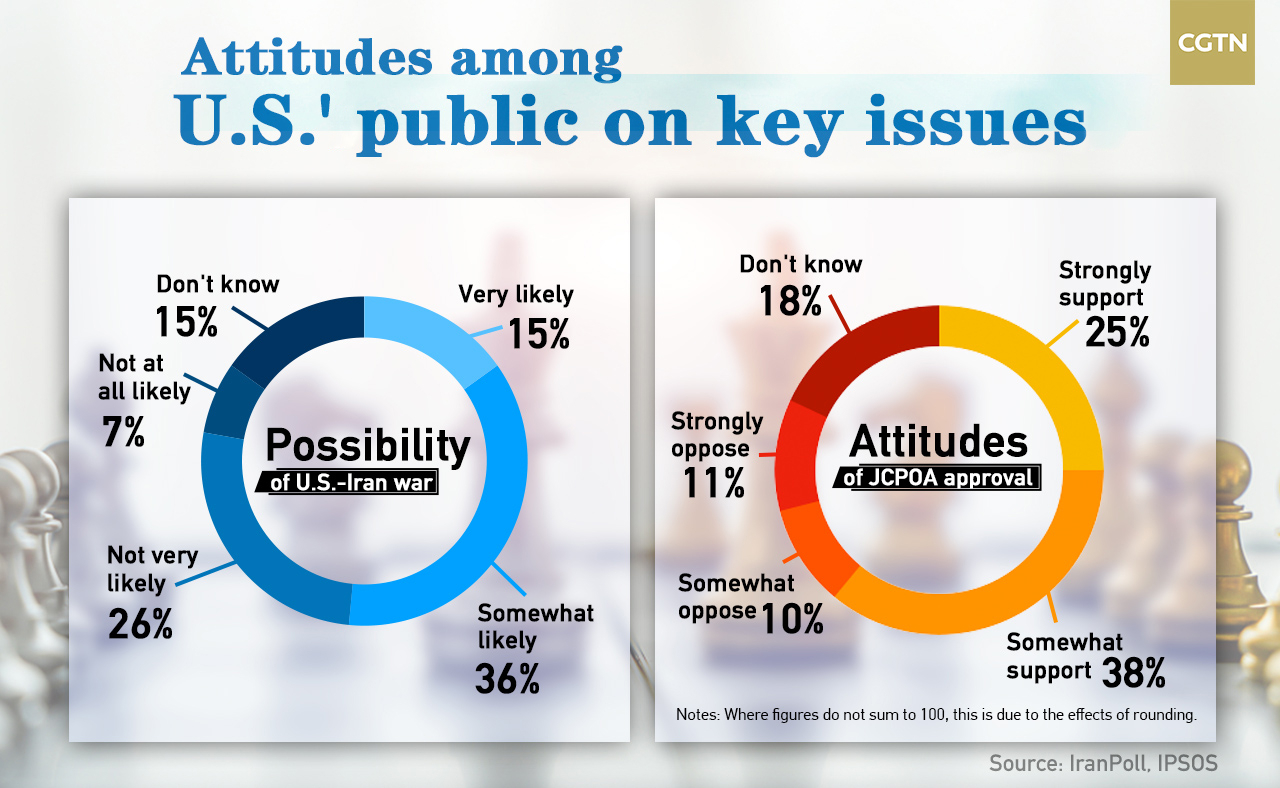
Bellicose statements and tit-for-tat actions between the U.S. and Iran have made news headlines in recent weeks, amid global concerns that things could get out of hand. Issues like Iran's nuclear capability, U.S. sanctions on Tehran and the outlook on the Joint Comprehensive Plan of Action (JCPOA), or the Iran nuclear deal, are dividing public opinion around the world.
But where do American and Iranians — two of the most important stakeholders in the tense situation —stand from these sticking points? CGTN has gathered data that trickled out in recent months to paint a picture about who thinks what about some of the burning issues in the U.S.-Iran stalemate.

The nuclear deal Iran reached with major world powers was one of the highlights of the year 2015, but with President Donald Trump pulling out the U.S. from it and Tehran as a result going back on some of the promises it had made under the framework, many are left wondering whether the agreement is crumbling.
Ever before the recent flare-up in tensions, enthusiasm of the Iranian public seems to have been dwindling. A survey conducted by research firm IranPoll at the beginning of this year shows that only 51.5 percent of respondents either strongly or somewhat approve of the landmark deal — down from the 75 percent registered in August 2015.
The proportion of those who "strongly disapprove" of the agreement had risen to 16 percent by December 2018, up two percent from April the same year.

Worsening economic conditions in Iran amid punitive measures imposed by Washington could explain why the Iranian public is increasingly doubting the deal.
The agreement revived the country's economy after its implementation in 2015, with Iran's GDP growing by 13 percent in 2016, according to data from the International Monetary Fund (IMF). However, the reinstatement of U.S. sanctions took a heavy toll on Iran's economy, driving the nation's GDP down by 3.9 percent in 2018, according to the IMF.

Iran's oil output was also battered after the U.S. put an embargo on Iran's exports of the commodity and ended waivers for international buyers from the Middle Eastern nation.
Iranians do not feel that they have received enough benefits from the agreement and 69 percent of respondents said their country should "strive to achieve economic self-sufficiency" when asked which strategy Iran should adopt.

And while Europe is trying to help Iran stand back on its feet by creating a new channel to circumvent the U.S. sanctions — despite Tehran saying it's not doing enough — the Iranian public doesn't seem to think the track record of European countries is swoon-worthy.
By December last year, just 43 percent of respondents expressed confidence in European countries to live up to their obligations toward the deal, down from 60 percent in January 2018.

Things don't look promising in the other corner either, as 51 percent of Americans believe their country and Iran could head to war in the next few years, according to an Ipsos poll in May. That's 8 percentage points higher than a similar poll conducted in June 2018.
Despite Trump's decision to exit the deal, the poll showed that 61 percent of Americans still support the 2015 agreement, which would curb Iran's potential pathway to a nuclear bomb in return for sanctions relief.
However, 78.6 percent of Iranians believed it was more important for their country to develop its nuclear program. Meanwhile, 59 percent of them see "domestic economic mismanagement and corruption" as the greatest negative impact on the Iranian economy.
(Graphics by Yin Yating)

Copyright © 2018 CGTN. Beijing ICP prepared NO.16065310-3
Copyright © 2018 CGTN. Beijing ICP prepared NO.16065310-3